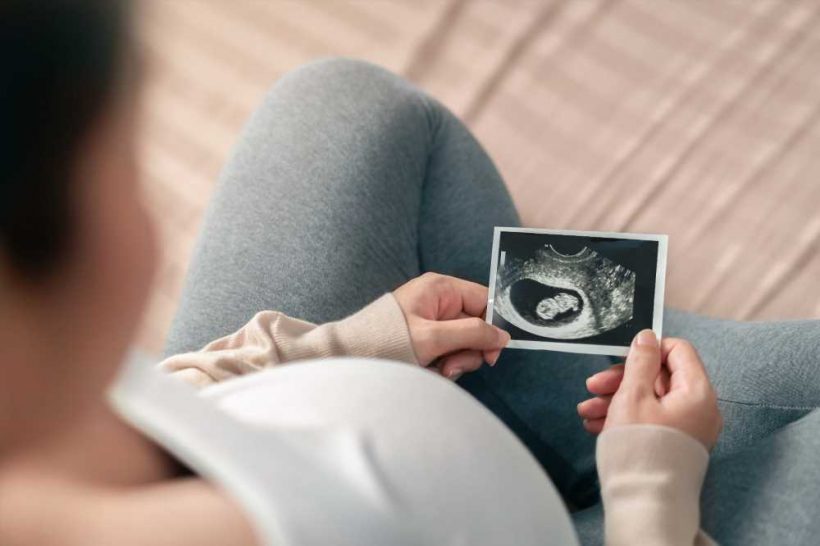A study published in the journal BMC Medicine describes that the risk of obesity and neurodevelopmental delay can vary between boys and girls concerning certain types of prenatal exposures. The study identifies a combination of four exposure levels that protect girls from developing these complications.
 Study: Prenatal environmental exposures associated with sex differences in childhood obesity and neurodevelopment. Image Credit: Chanintorn.v / Shutterstock
Study: Prenatal environmental exposures associated with sex differences in childhood obesity and neurodevelopment. Image Credit: Chanintorn.v / Shutterstock
Background
Developmental variation between boys and girls has been observed in many biological processes, including susceptibility to infection, neurological development, and pathogenesis of common diseases, especially obesity. There is evidence showing a higher prevalence of obesity in boys than girls in 96% of high-income countries across the world.
Despite significant variation in development between boys and girls, studies mainly consider sex as a confounding factor and not a causative factor. Studies investigating the effects of environmental factors on biological processes (exposome studies) primarily aim to analyze large-scale data collected at the individual- or population level so that the most appropriate interventions can be identified and timely applied to the right population. Since sex is the main difference between individuals, it is a prerequisite for exposome studies to investigate how environmental factors affect sexual variations in development and disease.
In the current study, scientists have developed a method of casual modeling to determine the profiles of certain prenatal exposures that may protect girls more than boys against obesity and neurodevelopmental delay.
Furthermore, the scientists have evaluated whether these prenatal exposures are associated with epigenetic changes, especially DNA methylation patterns, in boys and girls during their preteen years.
Study design
The scientists analyzed the data of 1044 children collected from the Human Early Life Exposome (HELIX) study conducted in Europe. Specifically, they analyzed clinical, neuropsychological, and methylation data during childhood (5 – 11 years) that were related to 93 prenatal exposures.
They conducted an exposome-wide interaction analysis to identify prenatal exposures with the highest impact on the sexual variation in obesity risk and neurodevelopmental delay. They classified the children into two different environments, namely E1 and E0.
The E1 environment included a combination of exposure levels where girls have a significantly lower risk of obesity than boys, as compared to the E0 environment, which included the remaining combination of exposure levels. They also investigated whether the relationship between sex and neurodevelopmental delay differs between E1 and E0.
Important observations
The analysis of obesity risk and neuropsychological measures in the study population revealed a lower frequency of obesity among girls compared to that among boys. Moreover, girls showed a significantly lower risk of attention deficit hyperactive disorder (ADHD) than boys.
The exposome-wide analysis of sex-prenatal exposure interactions on obesity revealed that dairy consumption and blood cotinine levels during pregnancy are major risk factors for girls. For boys, facility richness and green spaces during pregnancy were identified as potential protective and risk factors.
The scientists further analyzed whether a combination of these exposures creates specific environments where one sex is more susceptible to developing obesity than the other sex. Four identified prenatal exposures were used to develop a multi-exposure profile, which was further used to classify the entire study population.
About 64% of the children were classified into the E1 environment, which was characterized by moderate dairy consumption, non-smokers’ cotinine levels, low abundance of rich facilities, and the presence of green spaces. The rest of the children were classified into the E0 environment consisting of the remaining combinations of exposure levels.
The analysis of sex-environment interaction on obesity risk identified E1 as a prenatal environment where girls are significantly more protected against obesity than boys during preteen years.
Further analysis of sexual variation in neurodevelopment based on neuropsychological tests of non-verbal intelligence and working memory revealed that E1 is also associated with a lower risk of neurodevelopmental delay in girls than in boys.
Epigenome-wide association study between the environments was conducted using DNA methylation data. The analysis identified several biological processes, especially synapse reorganization and structural and functional regulation of synapses, which are directly related to neurodevelopment.
Study significance
The study reveals that girls born to mothers with moderate dairy consumption, non-smokers’ cotinine levels in the blood, low abundance of rich facilities, and green space exposure during pregnancy have a significantly lower risk of developing childhood obesity and neurodevelopmental delay than boys.
- Caceres A. 2023. Prenatal environmental exposures associated with sex differences in childhood obesity and neurodevelopment. BMC Medicine. https://bmcmedicine.biomedcentral.com/articles/10.1186/s12916-023-02815-9
Posted in: Child Health News | Medical Research News | Medical Condition News
Tags: Blood, Childhood Obesity, Children, DNA, DNA Methylation, Frequency, Helix, Medicine, Obesity, Pregnancy, Prenatal, Synapse

Written by
Dr. Sanchari Sinha Dutta
Dr. Sanchari Sinha Dutta is a science communicator who believes in spreading the power of science in every corner of the world. She has a Bachelor of Science (B.Sc.) degree and a Master's of Science (M.Sc.) in biology and human physiology. Following her Master's degree, Sanchari went on to study a Ph.D. in human physiology. She has authored more than 10 original research articles, all of which have been published in world renowned international journals.
Source: Read Full Article
